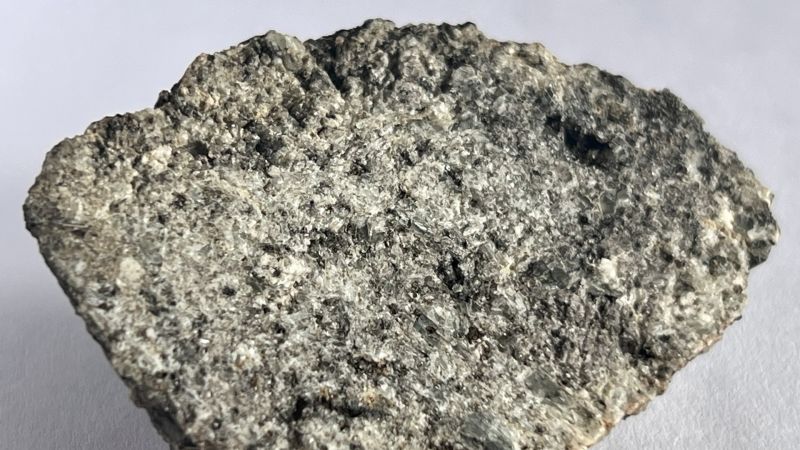In a groundbreaking development, researchers have unearthed two meteorites in the Sahara Desert in 2023 that may potentially originate from Mercury, the innermost planet of our solar system. This discovery, if confirmed, would mark a significant milestone, as it represents the first identified fragments from Mercury. Given the challenges associated with exploring this elusive planet, the implications of these meteorites are profound, offering new avenues for understanding Mercury’s composition and history.
Mercury is widely regarded as the least studied and one of the most enigmatic of the rocky planets in our solar system. Its proximity to the Sun has made it particularly difficult for spacecraft to explore. To date, only two uncrewed missions have successfully visited Mercury: Mariner 10, which was launched in 1973, and MESSENGER, which followed in 2004. A third mission, BepiColombo, is currently en route and is expected to enter orbit around Mercury in late 2026.
Despite these efforts, knowledge regarding Mercury’s geology and composition remains sparse. Unlike the moon and Mars, from which there are over 1,100 known meteorite samples cataloged by the Meteoritical Society, no meteorite from Mercury had previously been identified until now. These samples from the moon and Mars were formed from impact events that flung fragments into space, eventually landing on Earth, but this phenomenon might not occur in the same manner for Mercury.
Scientifically, the dynamics of ejection from Mercury are more challenging than those from Mars or the Moon. As Ben Rider-Stokes, a postdoctoral researcher at the UK’s Open University, indicated, “Though we should have around 10 Mercury meteorites based on dynamical modeling, ejection from Mercury also requires overcoming the Sun’s gravitational pull, making it a more arduous task.” Thus far, astronomers have not confidently identified any meteorite originating from Mercury, highlighting the rarity and significance of these newly discovered specimens, Northwest Africa 15915 (NWA 15915) and Ksar Ghilane 022 (KG 022).
The discovery of NWA 15915 and KG 022 is poised to enhance our understanding of Mercury. However, Rider-Stokes and his team have cautioned that there are inconsistencies when aligning these meteorites with existing knowledge about Mercury. Most notably, there is a concerning age discrepancy; the meteorites are believed to have formed approximately 500 million years earlier than the current estimate of the age of Mercury’s surface. Rider-Stokes noted that until materials from Mercury are returned to Earth for analysis, it will remain a challenge to definitively establish the meteorites’ origins.
Despite these complexities, initial compositional analyses indicate that the meteorites might indeed share attributes with Mercury. Historically, several meteorites have been linked to this planet, with the most notable being Northwest Africa 7325, discovered in Morocco in 2012. However, further research subsequently dismissed this identification due to its high chrome content, which contradicted predictions about Mercury’s surface. More recently, some scientists have suggested that a group of meteorites known as aubrites could originate from Mercury’s mantle; this, too, remains under scrutiny.
The insights gained from NASA’s MESSENGER mission, which provided critical data about Mercury’s crust, have shown that both NWA 15915 and KG 022 contain olivine and pyroxene, minerals confirmed to exist on Mercury. These meteorites failed to exhibit significant iron content, aligning with the understanding of Mercury’s surface composition. Nevertheless, they only showed traces of plagioclase, a mineral expected to be prevalent there, raising questions concerning their alignment with planetary models.
With more precise techniques emerging, future missions such as BepiColombo, set to begin its scientific investigation in early 2027, hold promise for resolving some of these enigmas. Sean Solomon, the principal investigator for MESSENGER, while not involved in the current study, expressed skepticism about the meteoritic origins of NWA 15915 and KG 022, primarily due to the age difference. Nevertheless, he acknowledged that these meteorites could yield valuable insights regarding the conditions that prevailed during the early formation of Mercury and its precursor materials.
In conclusion, while there remains a significant amount of uncertainty surrounding the origins of these meteorites, their discovery invites further examination and dialogue within the scientific community. Rider-Stokes plans to share these insights at the annual meeting of the Meteoritical Society, emphasizing that, while they cannot definitively rule out any Mercury association, the ongoing investigation of these samples is likely to stimulate extensive discussion and further research endeavors within planetary science.












